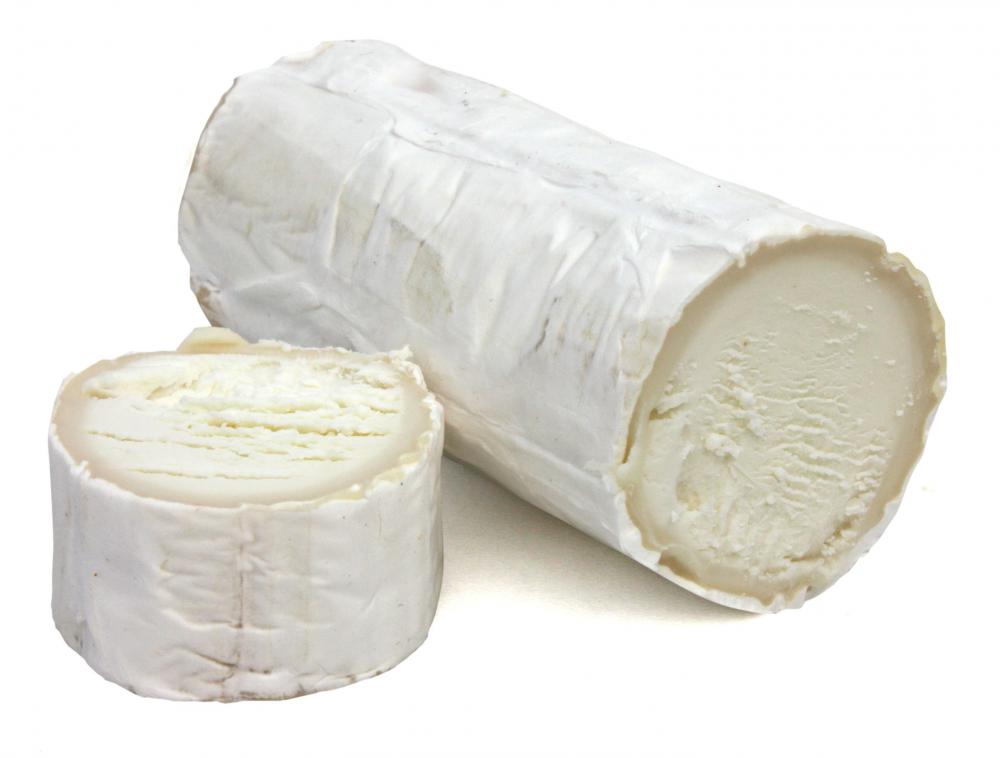At WiseGEEK, we're committed to delivering accurate, trustworthy information. Our expert-authored content is rigorously fact-checked and sourced from credible authorities. Discover how we uphold the highest standards in providing you with reliable knowledge.
What Is Involved in the Process of Cheese Making?
Many types of cheeses can be found throughout the world, so the recipes and processes for making them vary greatly. Despite the variety of cheeses, recipes and procedures, several basic steps usually are involved in the process of cheese making. Starter cultures and rennet are added to milk to begin the curdling process, resulting in curds and whey. The curds and whey are further manipulated and then salted, shaped and ripened to make cheese.
The initial process of cheese making involves adding cultures and rennet to milk. The type of both the milk and the cultures can vary from one cheese to another. Starter cultures are bacteria used to produce different flavors in cheese. The cultures also start the process of converting lactose to lactic acid, commonly known as acidification. An enzyme known as also can be added to further aid in the process.

After the acidification process has taken place, curds and whey will have formed from the original milk. The curds will result in cheese after the entire process of cheese making is complete. Depending on the type of cheese being made, the curds might be cut, cheddared or cooked. Cutting the curds allows them to release more moisture, resulting in a harder cheese. Cheddaring is done to create tiny curds that are formed in molds, and cooking the curds involves heating them to produce a more tender cheese.

Salting accomplishes two things in the process of cheese making: flavoring the cheese and preserving the cheese during the aging process. Cheeses derive their flavors from a variety of sources, one of which is the salt added to the curds during the process of cheese making. To preserve the cheese during the aging process, salt might be rubbed on the formed cheese, or a rag that has been submerged in brine might be rubbed on the cheese.

Shaping the cheese involves pouring cheese curds into various molds to form the shape of the cheese. Specific molds are used for some cheese varieties. Ripening usually is the final stage in the process of cheese making. This step involves allowing the cheese to mature under ideal conditions. The area in which the cheese is placed to ripen is controlled to keep the temperature and humidity at optimum levels. For some cheeses, additional steps are taken in the ripening process, such as injecting mold into the air, placing mold in or around the cheese or washing the cheese with certain solutions.
AS FEATURED ON:
AS FEATURED ON:



















Discussion Comments
@Sporkasia - Making goat cheese is a good idea since the cheese is healthier for most people than the cheeses made with cow's milk. Goat cheese has fewer calories and less salt. Another good thing about goat cheese is that it has less lactose, which means that people who are lactose intolerant can often eat goat cheese without having the bad side effects like they have when they eat regular cheese.
@Sporkasia - Whenever I get fed up with my job and the people I work with, which is not very often thankfully, I dream about starting some type of self-sustaining business far from the city and far from people in general. I have read books on a lot of potential opportunities, including a book about a couple who left the city, bought a large farm and started raising goats and making cheese.
The summary of their experiences goes like this. The work was a lot more than they bargained for, and the farm was a money pit. Also, they had not planned out their business very well, so there were a lot of surprises that meant more money needed to go into the business. Despite all of the hardships and headaches, they eventually managed to build a profitable business, and they are now away from the hustle and bustle of the city.
Unfortunately, I don't have the nerve to risk my savings and future on something like this. Also, I'm not sure how good I would be at working with goats.
My husband and I and our young children currently own a farm. It is a large farm, and we are not taking advantage of most of the acres of land. This is one reason we are looking for businesses we can start and operate from the farm. I know people raise goats, and I think this might be the business for us since we can make cheese and hopefully make the venture profitable.
Post your comments